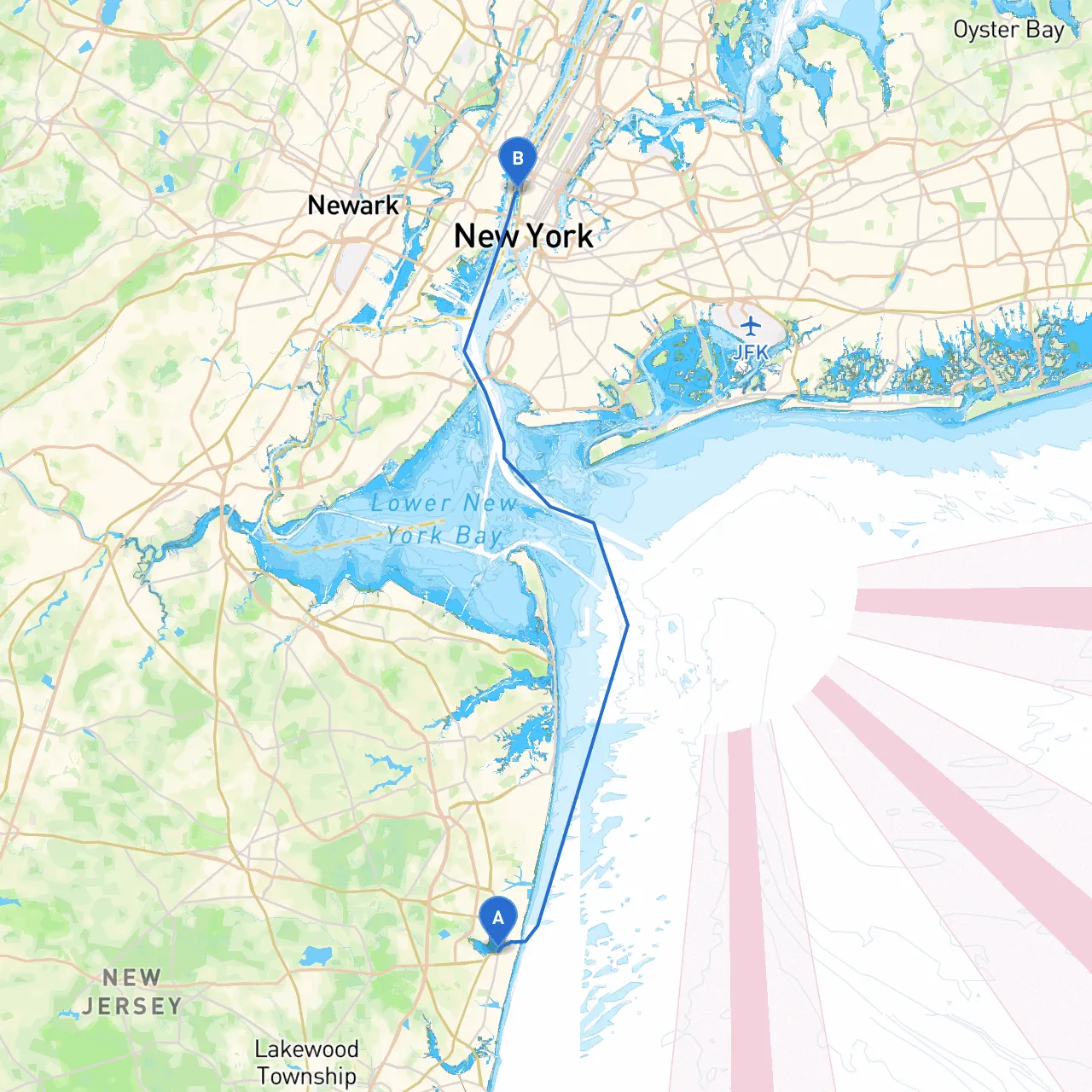

Departure: Belmar, NJ (Long/Lat: -74.0308, 40.1808)
Your adventure begins in Belmar, a charming coastal town known for its beautiful beaches and vibrant marina. Before you set sail, ensure your vessel is equipped according to safety regulations, including life jackets for all passengers, navigation lights, and a VHF radio.
As you exit the Belmar Canal, maintain a cautious speed and watch for fishermen and local boaters. Clear of the canal, steer toward the mouth of the Shark River, where you’ll encounter the first notable navigational aids—the Shark River Inlet buoys. Pay close attention to the markers; they help navigate you safely through the relatively shallow waters.
Heading north, your next destination is the Point Pleasant Canal, which leads toward Manasquan Inlet. This is a well-marked area, but use caution as it can be busy with both recreational and commercial traffic. Should weather conditions deteriorate, this area offers safe harbor at the Point Pleasant Basin. Here, you can dock and wait out any rough-weather forecasts while enjoying the local eateries.
After handling the Point Pleasant Canal, you will proceed into the open waters of Sandy Hook Bay. The entrance is flanked by two significant points of interest: the historic Sandy Hook Lighthouse and the tranquil Gateway National Recreation Area. This stretch is generally busy with vessels, so maintain a lookout for ferry boats and commercial shipping traffic. The navigation aids are plentiful, but always keep your charts handy and double-check your electronic navigation systems.
Continuing your course through Sandy Hook Bay, you will approach the Lower New York Bay. Various inlets and channels are present, notably the Raritan Bay to your west. Keep an eye out for the iconic Verrazzano-Narrows Bridge ahead, which marks your entry point into New York Harbor. Visibility can sometimes be reduced due to heavy traffic and weather, so ensuring your radar and AIS are operational is vital.
As you approach New York Harbor, prepare to marvel at the skyline and landmarks such as the Statue of Liberty and Ellis Island. There are numerous navigational aids in this area, including floating buoys and large commercial ships that may overshadow your smaller craft. It's crucial to adhere to the navigational regulations to improve safety and avoid close encounters.
Local Restrictions and Regulations:
In New York Harbor, be aware of the expansive no-wake zones around marinas and docks. The area can also get congested, especially during peak boating hours, so patience and defensive boating practices are paramount. Keep your VHF radio tuned to channel 16 for hailing or emergencies.
Upon your arrival in New York City, you have the option to dock at various marinas, such as the Chelsea Piers or the North Cove Marina at Battery Park City. Each offers stunning views of the Manhattan skyline and immediate access to dining and recreation opportunities.
Bays for Shelter:
Should the weather turn unfavorable, there are multiple options for safe harbor. Sandy Hook Bay and Raritan Bay offer significant shelter from storm conditions. Additionally, the Point Pleasant Basin serves as an excellent stopover point.
Recommendations for Preparation:
1. Safety Gear: Ensure you have a first aid kit, flares, and an emergency beacon onboard.2. Navigation Apps: Alongside your charts, consider using apps like savvy navvy, Navionics, and NOAA weather apps to keep track of your route and weather conditions.3. Plan Your Stops: Allocate time to stop at interesting spots like Sandy Hook or at a waterfront restaurant in New York for refreshment before concluding your trip.
This route from Belmar to New York is particularly suitable for intermediate to experienced boaters familiar with coastal navigation and managing heavy traffic situations. It combines scenic views with vital safety measures to ensure a memorable and safe journey. Enjoy your adventure out on the water!